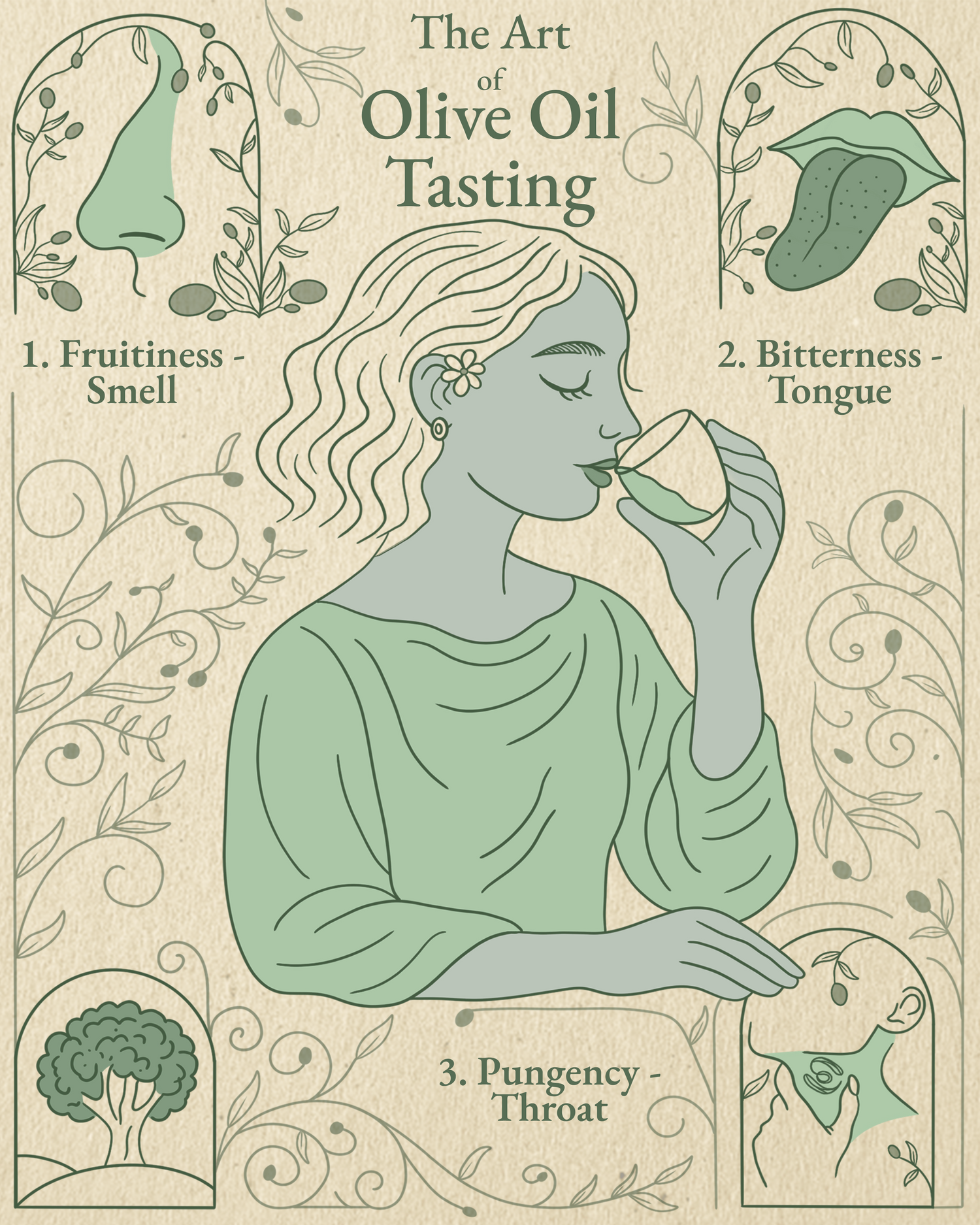
The Art of Olive Oil Tasting: A Guide to Flavor & Quality
Tasting olive oil is much like tasting wine - it’s about detecting aromas, flavors, and textures that reflect the oil’s quality and character. Whether you're a beginner or an expert, learning how to properly taste olive oil helps you appreciate its complexity and authenticity.
What Makes Extra Virgin Olive Oil (EVOO) Special?
Extra Virgin Olive Oil (EVOO) is the highest quality and least processed form of olive oil. It’s extracted without chemicals or heat, a process known as cold extraction, which preserves the natural flavors, aromas, and antioxidants of the olives. EVOO must also have an acidity level below 0.8%, ensuring its purity and freshness.
Our Taïm Olive Oil is 100% EVOO—pure, cold-extracted, and full of bold, natural flavor.
When tasting EVOO, three key attributes define its quality:
-

Fruitiness
The fresh, vibrant aroma of ripe or green olives sensed by smell
-

Bitterness
A natural, pleasant sharpness on the tongue
-

Pungency
A peppery sensation in the throat, a sign of high
antioxidant content
The fruitiness of olive oil happens in the nose, the bitterness in the mouth, and pungency in the throat. A great EVOO offers a balanced experience - whether delicate and mild for versatile use or bold and robust to stand out in dishes.
At Taïm, we celebrate these standards. Our EVOO is crafted to deliver that perfect balance of fruitiness, bitterness, and pungency, giving you an exceptional tasting experience that elevates every dish.
Step-by-Step Guide to Olive Oil Tasting
1️. Choose the Right Glass
Use a small, dark glass to avoid being influenced by the oil’s color, which is not an indicator of quality. Professional tasters use blue-tinted glasses for this reason.
2. Warm and Aerate the Oil
Cup the glass with one hand while covering the top with the other to trap the aroma. Swirl gently for 30-60 seconds to release the oil’s aromatic compounds.
3️. Smell the Oil
Uncover the glass and take a deep sniff. A high-quality EVOO should smell fresh, fruity, and vibrant. Common aroma descriptors:
- Fruity - Green apple, banana, tropical fruits (often from later-harvest olives).
- Green & Herbaceous - Fresh-cut grass, parsley, basil, thyme (typical of early-harvest olives).
- Nutty - Almond, walnut, hazelnut (more common in riper olives).
- Floral - Hints of chamomile, rose.
4. Sip and Taste the Oil
Take a small sip, coating your tongue to evaluate its bitterness and pungency. Key sensations to notice:
- Bitterness – Felt on the back of the tongue; a sign of high polyphenol content (powerful antioxidants). A slight or pronounced bitterness indicates a high-quality oil.
- Pungency (Peppery Kick) – A tingling or burning sensation in the throat, often causing a slight cough. This comes from oleocanthal, a natural anti-inflammatory compound in EVOO.
Final Thought
Every olive oil tells a story - of the region it’s from, the type of olive, and the care that went into making it. Take your time, taste with intention, and let your senses guide you.
At Taïm, our Souri olives heirloom produce a bold, high-polyphenol EVOO with a fresh, herbaceous aroma, pronounced bitterness, and a signature peppery finish. It’s a vibrant, full-bodied oil that reflects the rich Lebanese terroir.



